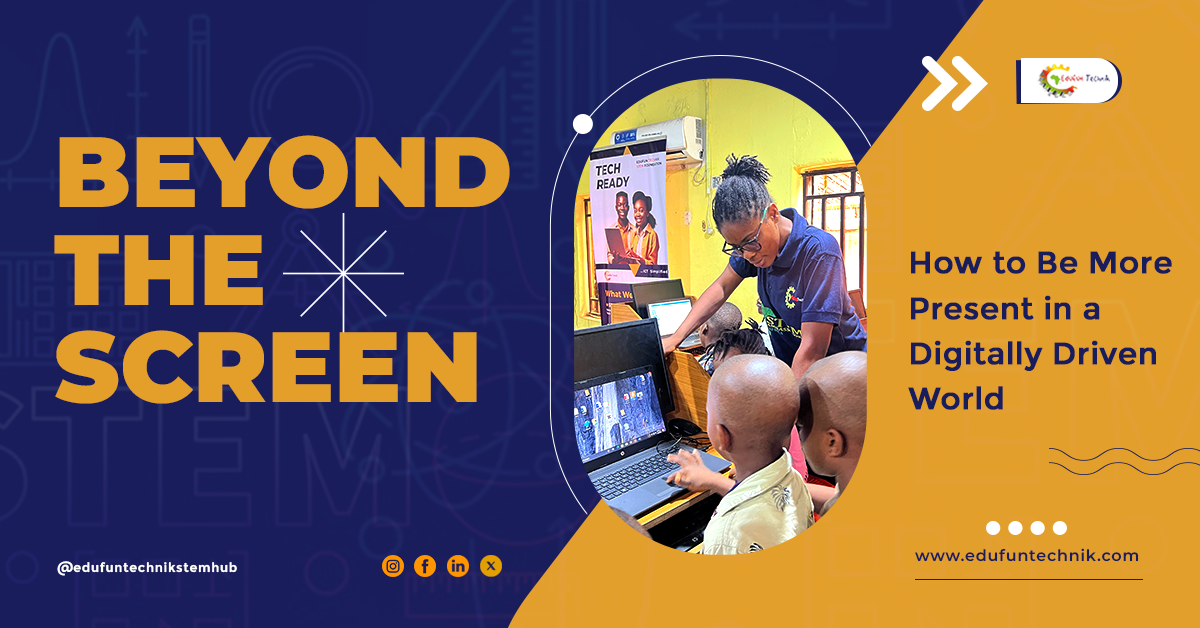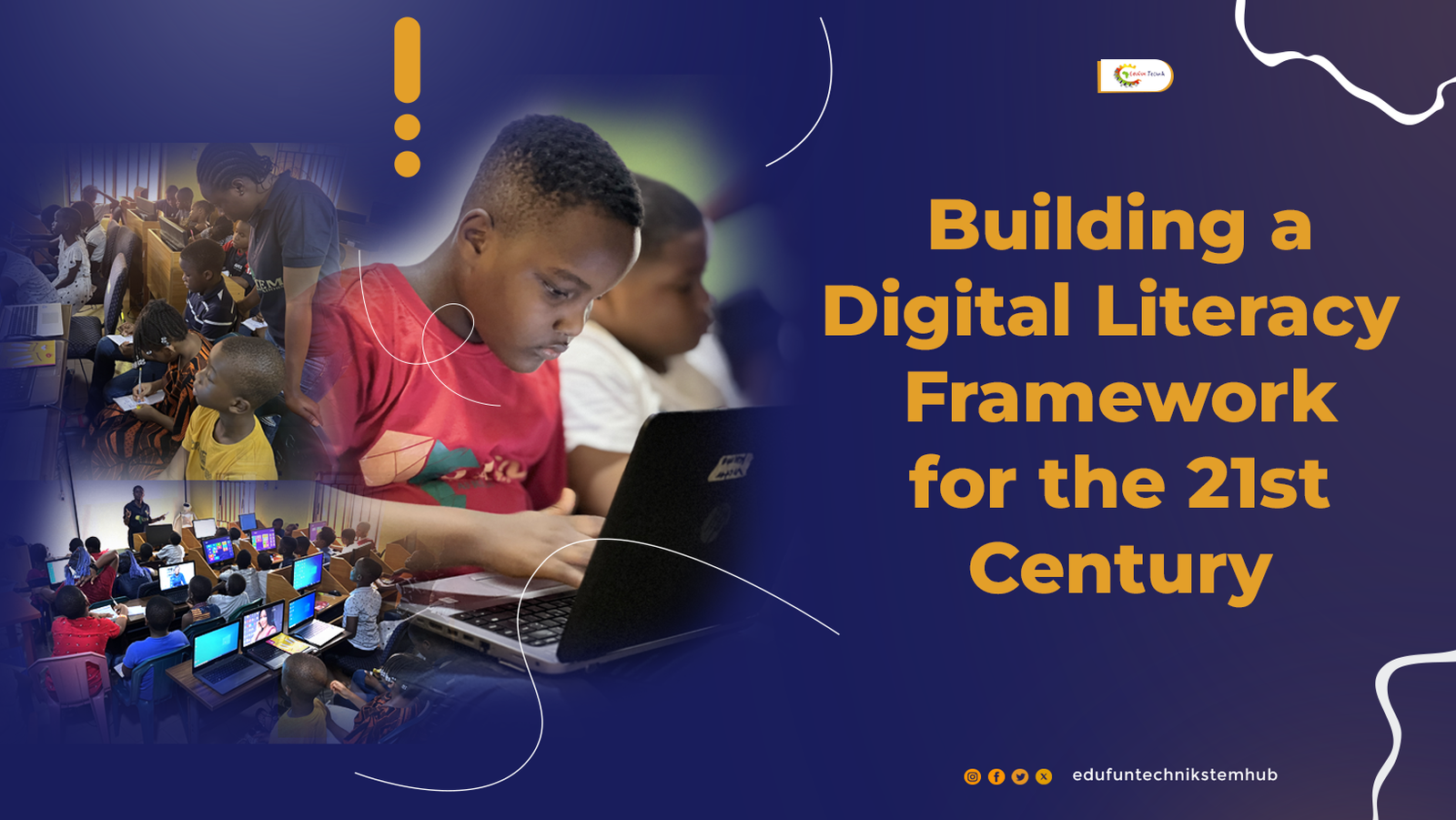Technology has become an integral part of our daily lives, shaping the way we work, learn, and interact with the world around us. For today’s youth, going through this tech-driven world is not just a luxury but a necessity. However, despite being labeled as “digital natives,” many young people struggle with tech anxiety and lack confidence in their ability to tackle complex technological challenges.
The Digital Divide: More Than Just Access
When we think about the digital divide, our minds often jump to the gap between those who have access to technology and those who don’t. However, a less visible but equally important divide exists: the confidence gap. This gap separates those who feel empowered to engage with technology creatively and critically from those who merely consume it passively.
Many young people have access to technology, but they lack the confidence to fully engage with it. They are consumers of tech, not creators or problem-solvers. Addressing this confidence gap is crucial for ensuring that young people are prepared for the future. It is not just about making them comfortable with current technology, but about equipping them with the confidence and skills to adapt to new technologies as they emerge. By fostering tech confidence, we can help bridge this divide and create a generation of youth who are not just passive consumers of technology, but active creators, innovators, and problem-solvers in the digital realm.
Why Tech Confidence Matters
The importance of building tech confidence in youth extends far beyond the realm of personal comfort with devices and software. It is about preparing young people for a future where technology will play an increasingly central role in all aspects of life, from careers to civic engagement.
Looking at the job market of the future, the need for tech-confident individuals becomes even more apparent. According to a report by the World Economic Forum, 65% of children entering primary school today will ultimately end up working in job types that do not even exist yet. Many of these jobs will likely involve technology in some form.
As Satya Nadella, CEO of Microsoft, aptly puts it, “Every company is now a software company.I think a lot about what happens in computing. It is getting embedded in our world. Computing is a core part of every industry. A car is now a computer. Software skills are a valuable resource. I don’t think in ten years we will have these demarcations. We won’t have the tech industry and other industries” This sentiment underscores the pervasive nature of technology in the modern workplace and highlights the need for a workforce that is confident in its ability to adapt to new technological challenges.
But the importance of tech confidence goes beyond future job prospects. It is about developing a mindset that embraces challenges and sees them as opportunities for growth. Carol Dweck, a psychology professor at Stanford University and pioneer of the growth mindset concept, explains, “In a growth mindset, people believe that their most basic abilities can be developed through dedication and hard work—brains and talent are just the starting point.” When applied to technology, this mindset can help young people approach new tech challenges with curiosity and resilience rather than fear and avoidance.
Moreover, tech confidence is closely tied to digital citizenship and online safety. Young people who feel confident in their understanding of technology are better equipped to deal with the complexities of the digital world, including issues of privacy, security, and ethical online behavior. They are more likely to critically evaluate the information they encounter online and make informed decisions about their digital interactions. As we continue to struggle with issues like misinformation and online safety, building tech confidence in youth becomes not just a matter of individual empowerment, but of societal importance.
Strategies for Building Tech Confidence
Building tech confidence in youth requires a different approach that combines mindset shifts, hands-on experiences, and supportive environments. One of the most fundamental strategies is building a growth mindset specifically in relation to technology skills. This involves encouraging young people to view tech challenges not as big challenges, but as opportunities for learning and growth.
Mitchel Resnick, professor at the MIT Media Lab and creator of the Scratch programming language, emphasizes the importance of hands-on, creative engagement with technology. He states, “Creative activities bring joy, meaning, and purpose to people’s lives. Focusing on creativity is not just an economic imperative, it is also a path towards human fulfillment, an opportunity for humans to be more human.” This approach turns abstract tech concepts into tangible experiences, making them more accessible and less intimidating for young learners. By providing opportunities for youth to create their own games, animations, or digital stories, we can help them develop confidence in their ability to use technology as a tool for self-expression and problem-solving.
Another key strategy is connecting technology to young people’s existing interests and passions. When tech skills are presented in isolation, they can seem dry or irrelevant. But when they are linked to areas that youth already care about – whether it is music, sports, art, or social causes – they become much more engaging and approachable. For instance, a teenager who loves music might be more excited to learn about digital audio workstations than about coding in abstract terms. By making these connections, we can help young people see technology not as a separate, intimidating field, but as a powerful tool for pursuing their interests and achieving their goals.
Creating safe spaces for experimentation and failure is also crucial in building tech confidence. Many young people shy away from tech challenges because they are afraid of making mistakes or appearing incompetent. To counter this, we need to create environments where it is okay to try, fail, and learn from those failures. Adopting the Eileen Lapington Ph.D. approach from her article titled “Low Floors, High Ceilingsin the Humanities Classroom; “We design our courses to be ‘low floor, high ceiling’ – easy to get started, but with room for advanced learning. This builds confidence from the very beginning”. By emphasizing the learning process over perfect outcomes, we can help young people develop the resilience and problem-solving skills that are crucial for tech confidence.
The Role of Schools and Communities
Schools and communities play a key role in supporting tech confidence among youth. It is not enough to assign technology education to a single computer science class or after-school club. Instead, technology needs to be integrated across the curriculum, demonstrating its relevance and applicability in various subjects and real-world contexts.
Karen Cator, former Director of the Office of Educational Technology at the U.S. Department of Education, emphasizes this point: “Technology isn’t just a class, it’s a tool for learning across classes.” This approach not only helps students see the practical applications of technology but also reinforces the idea that tech skills are fundamental rather than specialized knowledge. When students use digital tools to create history presentations, analyze data in science experiments, or compose music, they’re developing tech confidence in a natural, organic way.
However, for this integrated approach to be effective, teachers themselves need to feel confident with technology. Professional development for educators is crucial in this regard. As Jaime Casap, former Chief Education Evangelist at Google, points out, “We need to invest in our teachers and give them the skills, the confidence, and the resources to prepare kids for the jobs of the future.” This might involve workshops on new educational technologies, opportunities to collaborate with tech professionals, or even sabbaticals in tech companies to gain firsthand industry experience.
Community partnerships can also play a significant role in building youth tech confidence. By partnering with local tech companies, schools can bring in real-world examples and mentors, helping students see the practical applications of the skills they’re learning. These partnerships can take various forms, from guest speaker series to internship programs. Additionally, community centers, libraries, and other local organizations can offer makerspaces or tech clubs, providing after-school opportunities for kids to explore technology in a low-pressure environment. These spaces can be particularly valuable for students who may not have access to technology at home, helping to bridge the digital divide and build confidence in a supportive setting.
Overcoming Barriers to Tech Confidence
While the importance of tech confidence is clear, there are several barriers that can hinder its development in youth. One of the most significant challenges is the issue of limited resources. Not all schools or families can afford the latest technology, which can create a sense of being “left behind” in the fast-paced world of tech. However, it is important to remember that building tech confidence is more about developing a mindset and problem-solving skills than about having access to the newest gadgets.
The approach that the most important thing is not the tool itself, but the design thinking and problem-solving process that goes into using any tool should be adopted. This approach focuses on teaching underlying concepts that apply across platforms, many of which can be taught with minimal technology or even with pen and paper. By emphasizing computational thinking and problem-solving strategies, we can help build tech confidence even in resource-limited environments.
Another significant barrier is the persistence of assumptions and biases about who “belongs” in tech fields. These assumptions can discourage young people, particularly girls and minorities, from pursuing tech-related interests or careers. Kimberly Bryant, founder of Black Girls Code, addresses this issue head-on. She says, “We’re changing the face of technology by introducing girls of color to coding and technology at a young age.” Providing diverse role models and creating inclusive environments, we can challenge these stereotypes and help all young people see themselves as capable tech users and innovators.
The rapid pace of technological change can also be a barrier to confidence. Young people may feel overwhelmed by the constant emergence of new technologies, fearing that their skills will quickly become obsolete. To address this, it is important to focus on teaching adaptability and learning strategies rather than specific tools or languages. Reshma Saujani, founder of Girls Who Code, emphasizes this point: “Our job is not to create the next generation of tech workers. Our job is to create the next generation of tech leaders.” By building a love of learning and problem-solving, we can help young people develop the confidence to tackle whatever new technologies the future may bring.
Looking to the Future
As we look to the future, it is clear that building tech confidence in youth is not just about preparing them for future careers – it is about empowering them to shape the digital world they will inherit. The challenges we face as a society, from climate change to healthcare to social justice, will increasingly require technological solutions. By building a generation of tech-confident youth, we are investing in our collective ability to address these challenges creatively and effectively.
Megan Smith, former U.S. Chief Technology Officer, provides an inspiring vision for this tech-confident future. She says, “The kids today are so far ahead of where we were. They’re going to blow us away with the solutions they come up with.” This optimism is well-founded when we consider the potential of youth who are not just comfortable with technology, but confident in their ability to use it as a tool for positive change.
However, as we encourage youth to embrace digital challenges, it is important to maintain a balanced perspective. Technology should be seen as a powerful tool, but not as an end in itself. We must also foster critical thinking skills that allow young people to question and shape the role of technology in society. As Tristan Harris, co-founder of the Center for Humane Technology, reminds us, “Technology is not neutral. We need to teach kids not just how to code, but how to critically examine the effects of their creations on society.“
Ultimately, building tech confidence in youth is about more than individual success – it is about creating a society that can harness the power of technology for the greater good. Every time a young person overcomes a tech challenge, they are not just learning about technology – they are learning about their own capacity to grow, adapt, and make a positive impact in our digital world. As educators, parents, and community leaders, our role is to provide the support, encouragement, and opportunities that allow this confidence to flourish. In doing so, we are not just preparing youth for the future – we are empowering them to create it.







